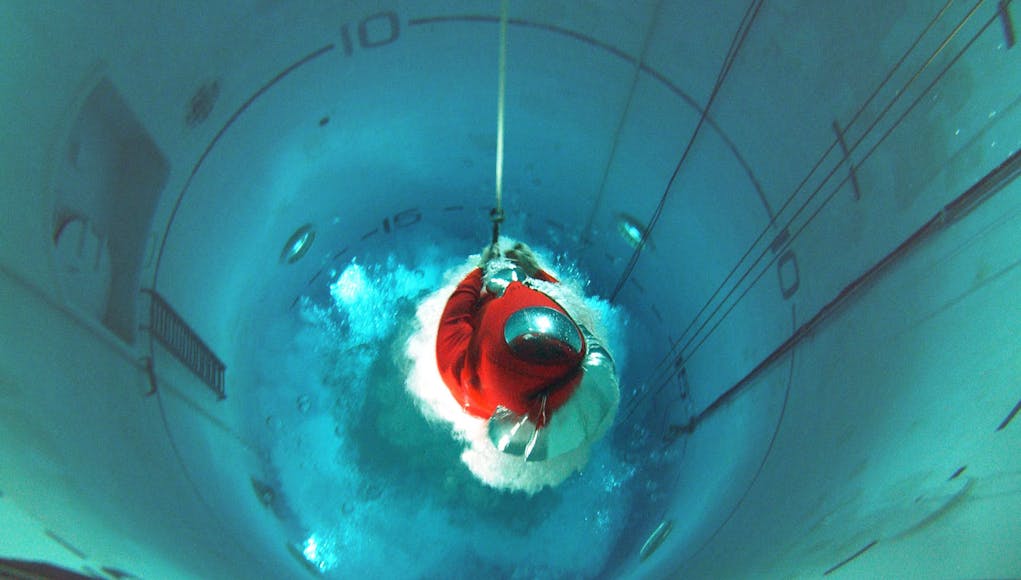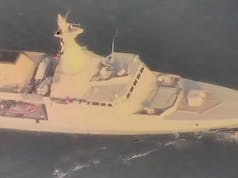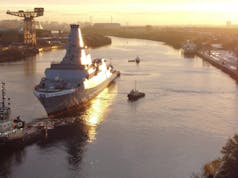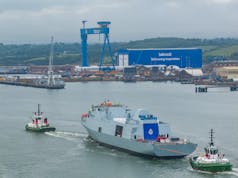4,500 sets of survival equipment will be purchased for the Royal Navy, the sets will be required to work in depths of up to 198 metres with a surface survival time of 72 hours.
Submarine Escape Survival Equipment (SESE) is a whole-body suit comprising a one-size fits all, inner terminal liner known as a Thermal Protection Aid (TPA) and a single person life raft all contained in a sealed system within a protective valise.
It allows submarine crew to evacuate from a disabled submerged submarine, without assistance, in a safe and controlled manner.
According to the Request for Information issued to industry:
“The intention of the equipment is to keep the escapee dry and protected from the environment during ascent, and to provide buoyancy, freeboard and terminal insulation at the surface. The SESE shall have a life of 10 years accompanied by an all-inclusive warranty. The value of this procurement is between approximately £10M to £15M.”
The requirements are also outlined.
“The contract duration will be for 5 years where a procurement of approx. Up to 4500 SESE will be required to meet the following standard:
• Depths of up to 198 metres with an appropriate ascent speed.
• Surface survival time of 72 hours;
• Materials used in the manufacture of SESE must be compliant with the Submarine Material Toxicity Database;
• Stored in an air temperature range of -1C to +65C without degradation;
• Must be capable of being donned within 3 minutes 15 seconds;
• Must be capable of being stored in a humid environment.
• The SESE’s air inlet valve must allow connection to current Royal Navy Hood Inflation System;
• Must retain buoyancy on surface and have a method of oral inflation and;
• Push fit connector must be able to withstand a force of 1000N prior to separate from the hose.”
In addition to the above the Authority requires approximately 60 training variant SESE which shall include support throughout the life of the contract.














A rather unfortunate typo I suspect “inner terminal liner” 😂
Alton Towers, Thorpe Park etc, not even close!! This is the best free ride around, unfortunately, not open to the general public! The suits work well too.
Good to see your comment mate, as our SME along with Andy.
Do these replace existing kit as good as but life expired or are they an improvement?
Hi mate, this will be due to ‘life expired’ as they have a certain shelf life(15-20 yrs from memory) before they start to deteriorate.
A single suit with life raft fits into a carrying bag about the same size as a 15 ltr rucksack only more square in shape – making them easier to stow in the escape lockers in the required numbers.
The inner liner as it where, just allows an air pocket to form between that and the outer layer material, insulating the wearer from the water temperatures to a certain degree, hence the ’72 hrs’ bit. When inflated, it makes you look like an orange Michelin man – but, it works well.
Guess It’ll be SURVITEC again, not sure navy will go for TEXCON??
presume this one by Survitec Submarine Escape Immersion Equipment – Wikipedia, is this just the last lot are expiring and we need a new batch?
Pardon my ignorance but how do crew members avoid ‘the bends’ with this suit? Is it a case of the evacuee is escaping a pressurised, air-tight environment (at ‘normal’ pressure) rising up to the surface, which is at normal pressure also, so there’s little time (between sub and surface) for the body to be exposed to the extremes of deep-water pressure and the bends to take effect?
id imagine its that, from memory, the bends happens because nitrogen has a different effect on the body when its compressed, so i’d imagine that because the person isnt compressed the submarine is, theres not enough time between rising to the surface for the bends to be a major concern in a life or death situation. Could be wrong tho
With this type of escape, when the suit is inflated (in the escape tower), the air the system it uses is the same pressure as that at the sea surface. Therefore, there is no risk of the bends, all you do is breath normally throughout the entire ascent.
The escape tank ascent ( 30metres) that submariners practise only takes about 8-10 seconds, so theoretically, to get up from say 200m will take about a minute or so.
As Deeps says, the suit is inflated (filled with air) and you breath normally all the way up as the excess air (pressure) vents out as it increases in volume. If you do a ‘rush’ escape (really not recommended from 198 metres) then you constantly blow out to vent your lungs on the way up. Its a weird feeling as instinctively you know how much you can normally breath out but it keeps coming as the air expands in your lungs.
Again as Deeps says, its a great ‘ride’, especially the 18M one which you only do (or did) the first time you do it and qualify. After that it was only the 9M version of the rush escape.
Thanks for your clarification folks.
That is essentially correct, however, there is a possibility of getting ‘bent’, especially if the submarine has been partly flooded, which would raise the internal pressure:
https://www.emerald.com/insight/content/doi/10.1108/JDAL-07-2020-0014/full/html
The Indians first fitted a diving bell type escape system to their submarines. The Russians are doing the same on their newer subs. I feel the RN should design something similar on its future subs.
The Russians have had a escape pod built into their SMs since somewhere around the mid 1980’s. Some SMs had two fitted, it is thought that said escape pods can hold the entire crew!!!!
A small number of the crew of the Komsomolets tried to use the escape pod when the submarine sank in 1989. One of them didn’t drown:
https://www.google.co.uk/amp/s/www.dailypress.com/news/dp-xpm-19890730-1989-07-30-8907300048-story,amp.html
Yes, not entirely sure why only o e didnt drown? You would like to think that had it been ‘full’ more then one crew member would have survived the ascent!
This is a very good idea (pretty much a sub equivalent of an ejector seat), although it would also make sense to fit subs with Torbuster, which is a hard-kill and soft-kill method to take out torpedoes, as well as IDAS, which is a way to take out ASW helicopters, as used by German Type 212 subs. If Astutes (and their replacements) had all 3 systems, then the subs and their crews would be MUCH more survivable.
Oh and fitting French MdCN anti-ship missiles (range 1,000km) that can be fired from torpedo tubes wouldn’t go amiss either. That would also make subs more survivable if the MdCN missiles take out ships with ASW helicopters, but these missiles would also make an entire carrier (or other) group more survivable.